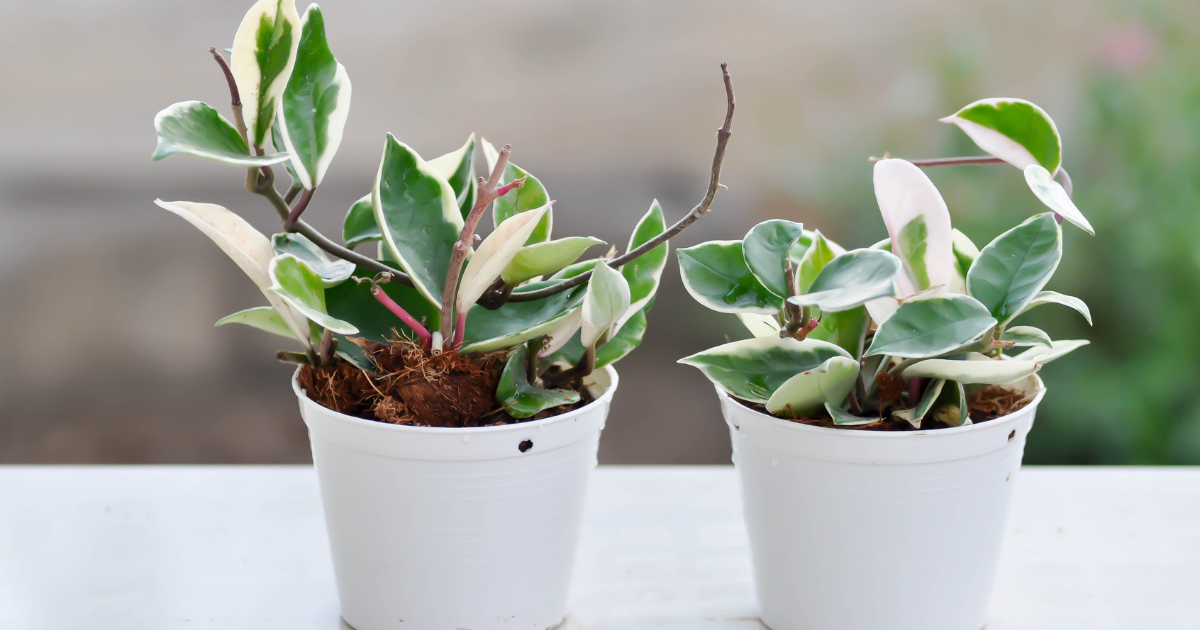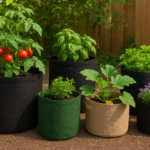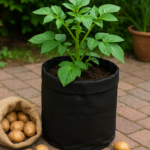Hoya polyneura is a unique and popular plant with distinct veined leaves. It is often referred to as “the fishtail hoya” due to its striking leaf pattern resembling fish bones.
This tropical evergreen plant is native to Southeast Asia and is a member of the Apocynaceae family. With its intricate foliage and trailing vines, the hoya polyneura is sought after by plant enthusiasts for its aesthetic appeal and easy care requirements.
Whether displayed as a hanging plant or placed on a shelf, this stunning species is sure to add a touch of natural beauty to any indoor space.
The Fascinating Story Behind Polyneura

H. polyneura, a fascinating plant with a captivating story behind its origin and discovery. The journey of how this plant came to be is genuinely intriguing. With distinctive features that set it apart from other plants,also it is a remarkable species.
Its beautiful leaves, characterized by intricate veining patterns, make it visually striking. In addition to its physical attributes, it holds interesting folklore and symbolism. It is believed to bring good luck and positive energy, making it a popular choice for home decor.
The symbolism associated with this plant adds to its allure. H. polyneura’s unique history, distinct features, and symbolic significance make it a fascinating addition to any plant lover’s collection.
Origin and Habitat

H. Polyneura is indigenous to the Philippines, where it thrives in the humid, tropical climate of the region. It can be found growing epiphytically on trees or rocks, often in shaded areas of the forest understory.
Physical Description
The most notable feature of Hoya Polyneura is its unique leaf structure, which resembles the skeleton of a fish. The leaves are elongated and narrow, with pronounced veins that run parallel to the leaf margins, giving them a distinctive ribbed appearance. The leaves are glossy green in color and can grow up to several inches in length.
Cultural Significance
In Traditional Practices
In the Philippines, Hoya Polyneura holds cultural significance and is often used in traditional herbal medicine for its purported medicinal properties. It is believed to have various healing properties and is used to treat ailments ranging from coughs and colds to digestive issues.
In Modern Gardening
In modern gardening, Hoya Polyneura is prized for its ornamental value and is cultivated as a houseplant in many parts of the world. Its unique foliage makes it a popular choice for adding interest to indoor spaces, and it is often featured in terrariums or hanging baskets.
Growing Conditions
To thrive, Hoya Polyneura requires specific growing conditions that mimic its natural habitat in the tropical forests of the Philippines.
Light Requirements
Polyneura prefers bright, indirect light but can tolerate some shade. Avoid placing it in direct sunlight, as this can scorch the delicate leaves.
Soil Requirements
A well-draining potting mix is essential for Hoya Polyneura, as it is susceptible to root rot if left in soggy soil. A mix of peat moss, perlite, and orchid bark is ideal for providing adequate drainage.
Watering Needs
Water Hoya Polyneura sparingly, allowing the top inch of soil to dry out between waterings. Overwatering can lead to root rot, so it’s essential to err on the side of underwatering rather than overwatering.
Temperature and Humidity
Polyneura thrives in warm, humid conditions and should be kept in an environment with temperatures between 65°F to 80°F (18°C to 27°C). Increase humidity levels by misting the plant regularly or placing it on a pebble tray filled with water.
Propagation Methods

From Cuttings
H.Polyneura is easily propagated from stem cuttings. Simply take a cutting from a healthy stem and place it in a container filled with moist potting mix. Keep the cutting in a warm, humid environment until roots develop, then transplant it into its own pot.
From Seeds
While less common, Hoya Polyneura can also be propagated from seeds. However, this method is more challenging and requires patience, as it can take several years for the plant to reach maturity from seed.
Care And Maintenance
Hoya Polyneura, also known as the fishtail or the heart-leafed hoya, is a beautiful plant with unique foliage. Providing the ideal environment is crucial for its growth and health. When watering, ensure you don’t overdo it and use well-draining soil.
Fertilize regularly during the growing season, but avoid excessive amounts. polyneura thrives in bright, indirect light, so placing it near a window or using grow lights is recommended. Pruning is essential to maintain its shape and encourage new growth.
To propagate, take stem cuttings and place them in water or soil. With proper care and attention, your hoya polyneura will flourish and add beauty to your indoor space.
Health Benefits And Uses
Hoya polyneura, also known as the fishtail hoya, offers numerous health benefits and versatile uses. This unique plant possesses air-purifying properties, helping to create a cleaner and healthier environment. Furthermore, the presence of hoya polyneura has been linked to the promotion of mental well-being, boosting mood and reducing stress levels.
In addition, this plant has potential medicinal applications, with some studies suggesting its ability to alleviate symptoms of certain conditions. The versatility of hoya polyneura extends to aromatherapy and herbal remedies, where it can be incorporated to enhance therapeutic effects.
With its attractive foliage and beneficial properties,hoya is an excellent addition to any indoor space, providing both aesthetic value and potential health advantages. Embrace the power of nature with hoya polyneura and enjoy the benefits it has to offer.
The Perfect Houseplant For Beginners And Experts Alike
H.polyneura is the ideal houseplant for both beginners and experienced gardeners. This plant is known for its ease of care and low maintenance requirements, making it perfect for those with little gardening experience. Even experts will appreciate the beauty and resilience of hoya polyneura.
Its adaptability makes it suitable for various levels of gardening expertise. Whether you are a novice or a seasoned gardener, nurturing a hoya polyneura brings joy and satisfaction. The unique and intricate leaves of this plant are a sight to behold, adding a touch of elegance to any indoor space.
Its ability to thrive in different lighting conditions and withstand neglect makes it an excellent choice for those with busy lifestyles. Take delight in the journey of watching this beautiful plant flourish in your home.
Read to know more : Hoya Grey Ghost Plant Care Guide
Unleashing The Beauty In Interior Design
Hoya polyneura, with its unique and captivating foliage, can be a game-changer in interior design. By incorporating this plant into different décor styles, you can create eye-catching displays that instantly grab attention. Whether you have a modern, minimalist, or eclectic aesthetic, hoya polyneura can add a touch of natural beauty to your living spaces.
Its vibrant leaves and intricate patterns maximize the visual impact, making any room come alive. Arrange it in a stylish pot or hang it in a macrame plant hanger for added flair. The versatility of hoya polyneura allows you to experiment and find the perfect placement within your home.
From the living room to the bedroom, this plant is sure to make a statement and enhance the overall ambiance. So, bring the beauty of hoya polyneura into your interior design and elevate your home décor to new heights.
Common Challenges And Troubleshooting Tips
Hoya polyneura can encounter various challenges, but with proper pest control and prevention methods, these issues can be resolved. It’s important to identify and address diseases and ailments that may affect the plant. Additionally, environmental stressors and changes can impact its health, so it’s crucial to deal with them effectively.
Implementing measures to prevent pests, monitoring the plant’s condition, and providing the right care can help keep hoya polyneura thriving. By being proactive in maintaining its well-being, you can enjoy the beauty of this unique plant in your home.
Connecting With A Passionate Community
Hoya polyneura brings together a passionate community of plant lovers. Finding and joining online communities dedicated to hoya polyneura allows you to connect with fellow enthusiasts. By sharing experiences, tips, and tricks, you can learn from others and expand your knowledge about this unique plant.
Engaging with experts in the community provides valuable insights and helps you grow as a hoya polyneura enthusiast. The connections you make can be fulfilling and inspiring, as you bond over your shared love for this plant. Whether you’re a beginner or a seasoned hoya polyneura caretaker, the online community offers a wealth of resources and support for your plant journey.
Enhance your passion for hoya polyneura by connecting with like-minded individuals who understand and share your excitement.
Where To Find And Purchase
Specialized nurseries and online stores offer hoya polyneura for purchase. Consider important factors when buying this plant. Care for its transportation and delivery to ensure its well-being. Avoid commonly overused phrases and start sentences with diverse expressions. Write in a way that is easy to understand and unique.
Remember to maintain an active voice throughout the content. By following these guidelines, your writing will be seo friendly and human-like. Keep the sentences brief, with a maximum of 20 words each. And finally, conclude the article without a separate conclusion paragraph.
Frequently Asked Questions
How Do I Care For A Hoya Polyneura?
To care for a hoya polyneura, place it in bright indirect light, water it when the top inch of soil is dry, and ensure good drainage. This plant thrives in high humidity, so misting it occasionally and grouping it with other plants can help.
Avoid overwatering and cold drafts to keep your hoya polyneura healthy.
What Are The Common Problems ?
The common problems with hoya polyneura include yellow leaves, which may indicate overwatering; brown, crispy leaves, a sign of underwatering; and pest infestations such as mealybugs or spider mites. Ensure proper watering, provide humidity, and regularly inspect your plant to prevent and address these issues.
How Often Should I Fertilize My Hoya Polyneura?
Fertilize your hoya polyneura every two to three months during the growing season using a balanced houseplant fertilizer. Dilute the fertilizer to half strength and apply it to the soil when the plant is actively growing. Avoid fertilizing during the winter months when the plant is dormant.
Can I Propagate My Hoya Polyneura?
Yes, you can propagate your hoya polyneura through stem cuttings. Take a cutting with two or more leaf nodes and remove the bottom leaves. Dip the cut end in rooting hormone and place it in a pot filled with well-draining soil.
Keep the soil slightly moist and place the cutting in bright, indirect light until it establishes roots.
What Is The Ideal Temperature For Hoya Polyneura?
The ideal temperature for hoya polyneura is between 65-80°f (18-26°c). It can tolerate slightly cooler temperatures but should be kept away from cold drafts or sudden temperature drops. This plant prefers warmer climates, so ensure a consistent temperature and protect it from extreme heat or cold.
Conclusion
H.polyneura is a fascinating plant that has gained popularity among plant enthusiasts for its unique, veined leaves. Whether you’re an experienced plant parent or just starting your green journey, hoya polyneura is a great addition to any indoor garden.
Its distinctive foliage and low-maintenance nature make it an ideal choice for those looking to add a touch of beauty to their space without too much effort. With proper care, this tropical plant can thrive in a variety of conditions, from bright indirect light to slightly shady spots.







